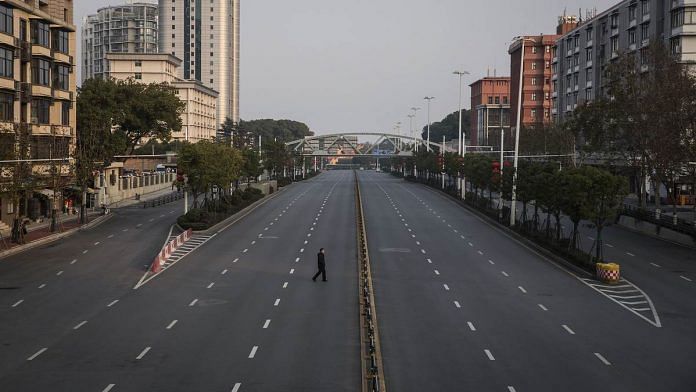New Delhi: This time, last year, the term Covid-19 didn’t exist, and almost no one knew of the pandemic that lay ahead. But it is suspected that it was exactly a year ago that the world’s brush with Covid-19 began, as one account suggests Covid-19 infected its first patient or ‘patient zero’ — a 55-year-old man — on 17 November 2019.
This date was first suggested by the Hong Kong-based South China Morning Post in a March 2020 report attributed to government data. However, other accounts identify different dates for the start of the pandemic.
The World Health Organization (WHO) maintains that Covid-19 was “first reported by officials in Wuhan city, China, in December 2019”. A report by Chinese doctors from Wuhan (the city believed to be the epicentre of the pandemic) published in The Lancet put the date at 1 December.
In the months since, the virus has left a trail of death in its path around the world. As of Wednesday, the world has recorded 5,60,15,438 Covid-19 cases across the globe and 13,45,060 deaths. The United States accounts for the maximum number of cases and deaths. India has the second highest number of cases, but the third highest fatality tally, after Brazil. China, where the Covid pandemic began has 324 active cases.
While a vaccine for Covid-19 now appears to be on the horizon, the onslaught of the novel coronavirus continues, forcing fresh lockdowns in European nations as they grapple with a second wave of the disease.
Also Read: Chinese Covid vaccine safe, generates immune response, trial results published in Lancet say
Different dates
The report that identifies 17 November 2019 as the date of the first Covid diagnosis says the patient may have been a 55-year old from China’s Hubei province, which is home to Wuhan. It suggests cases subsequently began increasing by one to five a day.
A month later, by 15 December, China had 27 cases, the report states. By 27 December, the number had multiplied to over 180. However, the report is yet to be verified by other sources.
Human-to-human transmission was publicly admitted on 21 January.
The virus transmission is believed to have begun at a wet market — where exotic animals are traded — in Wuhan. But the WHO, initiating a study into the origin of the virus, said in July that “it remains unclear whether the market was a contamination source, acted as an amplifier for human-to-human transmission, or a combination of those factors”.
Vaccine race heats up
Covid-19 was declared a pandemic in March 2020. By then, the US and the UK had declared it a public health emergency, with the latter recording its first death.
Soon afterwards, country after country began imposing restrictions in order to arrest the spread of the virus. India announced one of the world’s strictest and longest lockdowns on 24 March 2020. It has so far recorded nearly 90 lakh cases and over one lakh deaths.
While the pandemic is now believed to be easing in India, the national capital seems to be going through a third Covid wave. Meanwhile, Pune still remains the worst-hit metropolitan city.
European countries are currently battling a second wave. On 30 October, France announced a lockdown as cases surged and deaths reached a new peak since April. Austria capital Vienna ordered a three-week lockdown from 14 November, while Germany, on 2 November, introduced a “circuit-breaker national lockdown to try to stop a sharp rise in cases, closing restaurants, bars, cinemas and gyms, and banning leisure travel”.
However, hope is in the air as the race for a Covid vaccine throws up promising results. On 16 November, US company Moderna Inc announced that its vaccine is nearly 95 per cent effective “in a preliminary analysis of a large late-stage clinical trial”.
This claim came just a week after a shot developed by US firm Pfizer Inc and the German BioNTech SE was found to be over 90 per cent effective in an interim analysis. Both shots rely on a technology called messenger RNA that has never been used to build an approved vaccine.
Also Read: ‘Long Covid’ causing organ impairments in 70% of low-risk patients, says UK study



